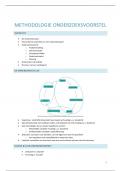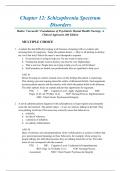Samenvatting
Summary of Strategic & Responsible Foresight - All required literature - University of Twente - International Business Administration - CHANGEL module
- Instelling
- Universiteit Twente (UT)
Summary of all the required literature for Strategic & Responsible Foresight - University of Twente - International Business Administration - CHANGEL module. The summary contains the following: Van der Duin 2016 Introducton Foresight in organizations, p.1-8. Vecchiato & Roveda 2010 Strategic Foresi...
[Meer zien]













